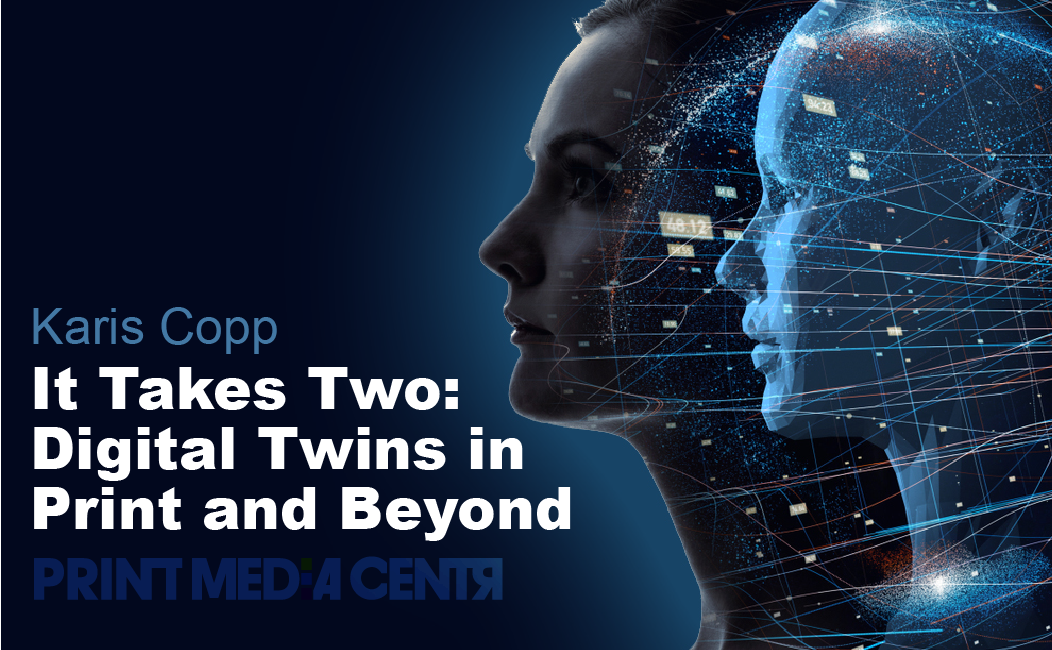Happy New Year, Printerverse! Certainly here in the UK we still find ourselves at home, living our lives through screens. I’m sure all of us have friends, family, and colleagues that we haven’t seen from below the shoulders for the best part of a year, if not longer. We have become accustomed to our digital lives in an era in which the ‘real thing’ isn’t currently available to us, and as we move into 2021 this ‘virtual reality’ continues to have a profound influence on the way we shop, the way we eat, the way we exercise, the way we socialise…pretty much everything we do.

As you might know, if you have read some of my previous Print Media Centr blogs, I love to explore technologies that serve as a bridge between the physical and the digital. It might be a new year but I plan to keep banging the same drum so today I’m going to be taking a brief look at the concept of digital twins. ‘Digital twin’ is the term for the virtual representation of an object, machine, or process that allows us to visualise the physical form, gather data, and analyse functionality, and that ongoing data flow allows the digital twin to continuously evolve and improve in close to real-time.
Our ability to collect useful data from software and hardware continues to advance, but often this information is a closed-loop and can prevent us from getting a holistic view of operations. As the print industry moves increasingly to the adoption of Industry 4.0 practices, digital twins can play a significant role in a seamlessly automated workflow by bringing all that data together to fully recreate physical production in digital form.
In packaging, the issue of data silos and fragmented supply chains can be a significant challenge due to the complex nature of the many touchpoints, so digital twins could prove to be a viable solution for the industry. As an example, equipment manufacturer BOBST set out a vision for ‘connectivity, digitalisation, automation and sustainability’ within packaging production in 2020, and digital twins play a role in their future plans, announcing that its new MASTER CI flexo press featured ‘the Job Recipe Management (JRM) System for a digitalized production workflow from file to finished product with the creation of a digital twin of the produced reels’.
Extended reality can take the value of digital twins to the next level. Virtual reality offers a more intuitive experience through full immersion in a 3D representation of the twin, while augmented reality can virtually overlay the digital twin onto the physical object – think holding your smartphone over a press and being able to see a layer showing the inner workings and identify a maintenance issue, and even fix it in real-time.
As much as I can’t wait for us to be back together in person, I’m grateful for the ability to recreate the physical world virtually, for now, to the extent that we can. Please do stay safe out there.
 Karis Copp is a UK-based writer, journalist, and communications expert. With a background as an editor and public relations specialist in the print industry, she now works on a freelance basis covering events, writing on industry news and trends, and working with businesses to help them tell their stories and connect with their customers. Follow her on Twitter @KarisCoppMedia.
Karis Copp is a UK-based writer, journalist, and communications expert. With a background as an editor and public relations specialist in the print industry, she now works on a freelance basis covering events, writing on industry news and trends, and working with businesses to help them tell their stories and connect with their customers. Follow her on Twitter @KarisCoppMedia.










